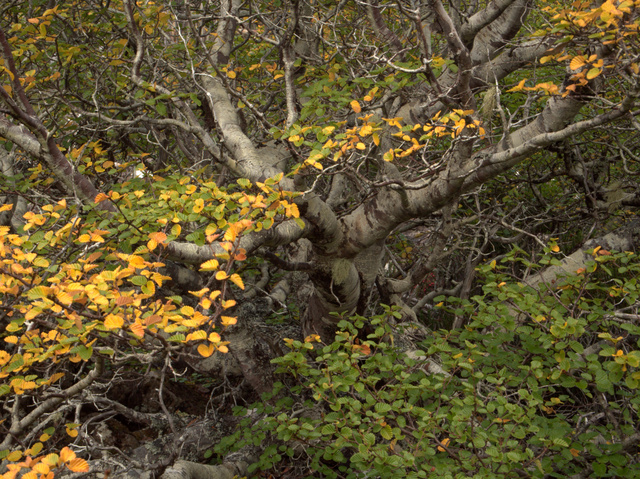Each autumn in Tasmania a unique observance takes place. A marker of the changing seasons assumes an almost pagan mysticism as flocks of goretexed pilgrims make their way to a handful of sub-alpine locations around the state to see the Turning of the Fagus.

Fagus, or to give it its formal introduction, Nothofagus gunnii, or Deciduous Beech, is a Tasmanian native that is Australia’s only native deciduous plant. Each autumn, the cool nights in its natural environments, part way up mountains in central Tasmania, trigger a change in this otherwise unpreposessing species that is common among exotic trees that were introduced along the rivers and around the farming land and towns a little further down the valleys, but that is unique among native species.
Its leaves turn from bright green to various shades of yellow, gold, orange and most rarely and excitingly, bright crimson red, before falling, only to regrow once the winter frosts and snow has given way to warmer weather in the spring. The bright colours are a rarity among the generally muted tones of the Australian flora, particularly in the subalpine areas above 800 meters which the fagus calls home.
One of the best and most accessible places to see the spectacle is the Mount Field National Park, around an hour north west of Hobart. The road from the park entrance that rises up the side of Mount Field has several spots where the fagus is readlily accessible, including near the dam at Lake Fenton, which still provides Hobart with substantial quantities of its drinking water.
The area is also a wonderful place to see many other endemic subalpine plant species.
To celebrate this uniquely Tasmanian phenomena, Tasmania’s Parks and Wildlife service is hosting a Fagus Festival next weekend (23-24 April 2016), with free entry to the park, shuttle buses up to Lake Fenton and more activities to celebrate its annual display.
Mount Field National Park was, along with Freycinet National Park on the east coast, the first national park gazetted in Tasmania, way back in 1916. It remains incredibly popular with both locals and tourists, although the vast majority venture little further than the oft-photographed but no less spectacular Russell Falls, which are an easy ten minute stroll from the Visitor Centre. Indeed, this is one of the most accessible ‘wilderness’ areas in Tasmania; accessible even to my wheelchair bound mother, who I have taken on several occasions to see the cascade. However its accessiblity detracts not at all from its spectacular nature and rainforest setting.
The drive from Hobart to Mount Field National Park is via the Derwent Valley, which is conveniently one of the finest areas to see exotic deciduous trees that line the River Derwent, act as windbreaks around rich farming land and occupy pride of place in gardens and townships. Poplars, willows, oaks, elms and more all put on a fine show, so at least one day exploring both the native and exotic deciduous plants of Tasmania are understandably a highlight of the autumn in Australia’s island state.
References
- Mt Field Fagus Festival
- Fagus Festival and Centenary Celebrations
- Deciduous beech, or Fagus, Nothofagus gunnii
- Fagus Factsheet (Parks and Wildlife Tasmania)
- The hidden charms of Bushy Park
Love the photo with the snow gums and fagus.
The fagus is stunning. I didn’t realise it was a beech.